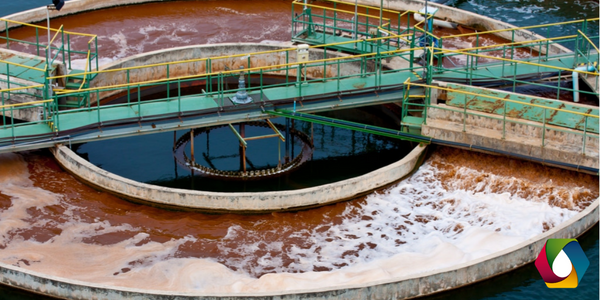To understand what to do with the sludge generated at a WTP, it is important to know that this waste, produced during the water treatment process, requires specific care to ensure environmental safety and comply with current regulations. The correct management of WTP sludge helps to reduce impacts, optimize operating costs and turn waste into resources.
What is sludge?
Sludge is the solid waste resulting from water (WTP) and wastewater (WWTP) treatment processes. It contains inorganic and organic materials and micro-organisms. Proper management is essential to avoid contamination and ensure environmental sustainability.
How is sludge generated in a WTP?
Sludge is the result of the coagulation, flocculation, decantation and filtration stages, where impurities are removed from the raw water. This material has high humidity and variable composition, which directly influences how it is treated and disposed of.
Types of Sludge
Origin | Features |
WTP | Rich in inorganic materials such as aluminum, iron and fine sand. |
ETE | It contains organic matter, microorganisms and nutrients such as nitrogen and phosphorus. |
Main options for treating and disposing of WTP sludge
Here are the most commonly used alternatives when it comes to what to do with the sludge generated in a WTP:
1. thickening and dewatering
Processes such as centrifuges, filter presses and drying beds reduce the volume of sludge, making it easier to transport and reducing disposal costs.
2. Landfill disposal
This is one of the most common solutions, as long as the sludge is classified correctly and meets environmental requirements.
3. Reuse in construction
In some cases, after proper treatment, the sludge can be used to make bricks, ceramics or as an input for paving, contributing to the circular economy.
4. Agricultural reuse (where permitted)
Some types of sludge, properly stabilized and analyzed, can be used as soil conditioners. This application depends on local regulations and the composition of the material.
5. Thermal drying and co-processing
Advanced technologies make it possible to transform the sludge into energy material or reduce the volume for final disposal even further.
Steps for correct handling
- Drain and dewater the sludge in beds or centrifuges.
- Store temporarily in a waterproof and covered place.
- Classify the sludge according to NBR 10004 (Class I, II-A or II-B waste).
- Dispose of correctly according to classification (reuse, co-processing, landfill or composting).
Possible destinations
Destination | Description |
Agricultural reuse | Use as a soil improver, according to agronomic report. |
Co-processing | Use in cement kilns as an alternative fuel |
Industrial landfill | Safe disposal for sludge classified as non-reusable. |
Composting | Mixed with organic waste to produce compost. |
Good practices
- Avoid direct disposal into water bodies.
- Record the volume and destination of the sludge periodically.
- Keep storage areas clean and signposted.
- Ensuring that operators wear PPE.
Benefits of proper management
- Reduction of environmental and legal risks.
- Improving institutional image.
- Possibility of sustainable reuse.
- Compliance with current environmental regulations.
EP Group – Sustainability and Excellence in Water and Wastewater Treatment
Why is it important to treat WTP sludge?
Managing this waste correctly prevents contamination, ensures compliance with environmental standards and can generate economic value through reuse and reduced operating costs.
Conclusion
Knowing what to do with the sludge generated in a WTP is essential for more efficient and sustainable operations. Choosing the best solution depends on the characteristics of the sludge, the available infrastructure and the applicable legislation. Investing in technologies and good practices is key to turning an environmental challenge into an opportunity.
Legislation and References
- CONAMA 430/2011 ̶ Conditions and standards for effluent discharge.
- NBR 10004/2004 ̶ Classification of solid waste.
- WTP and WWTP Operation Manual – EP Group

